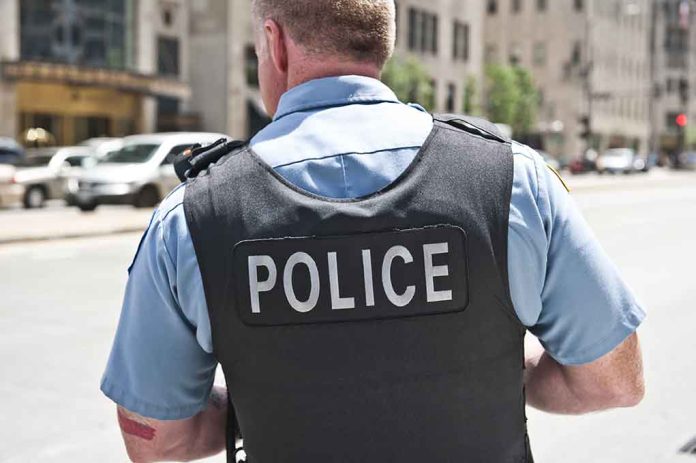
President Trump’s new executive order to militarize local police forces has ignited fierce debate over the balance between public safety and civil liberties as critics warn of potential overreach.
Key Takeaways
- President Trump signed an executive order titled “Strengthening and Unleashing America’s Law Enforcement” directing increased military equipment flow to local police.
- The order requires Attorney General Pam Bondi and Defense Secretary Pete Hegseth to implement the expanded transfer program by July 27, 2025.
- Law enforcement will receive surplus armored vehicles, tactical equipment, and surveillance technology.
- Critics warn the militarization of police could erode public trust and escalate tensions during police-citizen encounters.
- The order coincides with expanded military involvement in domestic law enforcement, raising constitutional questions.
Military Hardware Coming to Local Police Departments
President Donald Trump’s executive order has set the stage for a significant shift in American policing. The directive, formally titled “Strengthening and Unleashing America’s Law Enforcement to Pursue Criminals and Protect Innocent Citizens,” mandates federal agencies to increase the flow of surplus military equipment to local law enforcement agencies nationwide. Attorney General Pam Bondi and Secretary of Defense Pete Hegseth, in consultation with Homeland Security Secretary Kristi Noem, have been tasked with developing and implementing this expanded transfer program within 90 days.
While specific equipment types aren’t detailed in the order, previous similar programs have provided local departments with armored vehicles, tactical gear, and advanced surveillance technology. The initiative represents a substantial reversal of restrictions placed on such transfers during previous administrations. Law enforcement agencies will have until July 27 to determine eligibility criteria, oversight measures, and precisely which military assets can be distributed to combat crime in American communities.
DONALD TRUMP'S NEW ORDER SPARKS 'MARTIAL LAW' CONCERNS (Newsweek)
The "Strengthening and Unleashing America's Law Enforcement to Pursue Criminals and Protect Innocent Citizens" executive order, which the president signed on Monday, directs Attorney General Pam Bondi and… pic.twitter.com/blS4UgnAjt
— FXHedge (@Fxhedgers) April 30, 2025
Border Security and Expanded Military Authority
The militarization order comes alongside other significant security measures implemented during Trump’s first weeks back in office. On his first day, the president declared an emergency at the southern border and directed officials to evaluate using the Insurrection Act of 1807 for immigration enforcement. The rarely-invoked Insurrection Act provides presidents authority to deploy active-duty military for domestic law enforcement when circumstances make normal judicial proceedings “impracticable to enforce.”
The act has historically been limited to extraordinary circumstances such as the Civil War, confronting the Ku Klux Klan, enforcing school desegregation, and quelling the 1992 Los Angeles riots. Defense Secretary Hegseth and Homeland Security Secretary Noem are currently assessing border conditions and will announce recommendations soon. Border crossings are reportedly at a 25-year low, raising questions about the necessity of such measures among critics of the administration.
Growing Concerns Over Civil Liberties
The executive order has sparked intense debate about the implications for American civil liberties. Critics express concern that militarized police forces may inadvertently change the relationship between law enforcement and the communities they serve. Research has suggested that highly militarized police units may approach civilian encounters differently, potentially escalating rather than defusing tense situations. The Posse Comitatus Act of 1878 has traditionally limited military involvement in domestic law enforcement, creating a separation that some fear is now being eroded.
Supporters of the order counter that law enforcement needs advanced equipment to effectively combat increasingly sophisticated criminal enterprises and potential terrorist threats. They argue that surplus military equipment represents a cost-effective way to enhance police capabilities without requiring additional taxpayer funding. The White House has emphasized that the initiative aims to provide officers with necessary tools to protect both themselves and the communities they serve during an era of complex security challenges.
Sources:
Could Trump invoke another rarely-used law at the border?
Donald Trump’s New Order Sparks ‘Martial Law’ Concerns







